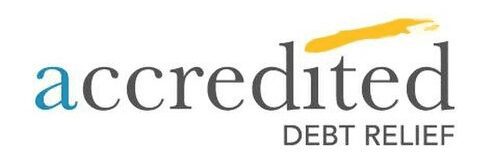Understanding the after-tax cost of debt is crucial for any business looking to effectively manage its finances. This metric measures the actual cost of borrowing money, taking into account the tax benefits associated with interest payments. By comprehending this calculation, businesses can make informed decisions about their borrowing and financing options, leading to significant cost savings. Additionally, it is essential to understand the differences between Debt Settlement vs Debt Consolidation as strategies for managing debt effectively.
In this blog post, we will explore what the after-tax cost of debt is, emphasizing its importance in financial decision-making. We will provide a clear explanation of how to calculate it and offer practical tips for reducing the after-tax cost of debt, enabling businesses to enhance their financial health. By gaining insights into the after-tax cost of debt and considering these alternatives, businesses can optimize their borrowing costs, make informed financial choices, and achieve better financial outcomes.
What is the After-Tax Cost of Debt?

The after-tax cost of debt is the actual cost of borrowing money, taking into account the tax benefits of interest payments. It is calculated by multiplying the pre-tax cost of debt by one minus the company’s marginal tax rate. In other words, it represents the net cost of borrowing once tax benefits and interest expenses have been factored in.
Calculating the after-tax cost of debt is essential for businesses because it provides a more accurate picture of the true cost of borrowing. It helps businesses make informed decisions about their financing options and can ultimately lead to significant cost savings.
Why is the After-Tax Cost of Debt Important?
Understanding the after-tax cost of debt is critical for any business looking to manage its finances effectively. It affects a company’s bottom line and cash flow in several ways, including:
- Budgeting: By knowing the after-tax cost of debt, businesses can accurately budget for their interest payments and avoid any surprises.
- Decision Making: Understanding the after-tax cost of debt can help businesses make informed decisions about their financing options. It allows them to compare the true cost of borrowing between different lenders and financing options.
- Financial Performance: The after-tax cost of debt can impact a company’s financial performance. Higher interest payments can reduce profits and negatively impact a company’s financial health.
Not understanding the after-tax cost of debt can lead to financial losses. For example, a company may choose to borrow from a lender with a lower interest and marginal corporate tax rate but end up paying more in interest once tax benefits are factored in. This can result in higher interest payments, which can negatively impact a company’s financial health.
How to Calculate After-Tax Cost of Debt

Calculating the after-tax cost of debt is relatively straightforward. Here’s a step-by-step guide on how to do it:
Step 1: Determine the total interest pre-tax cost of debt
The pre-tax cost of debt is the average interest rate a business is charged by a lender. This rate can vary depending on factors such as creditworthiness, economic conditions, and the type of loan.
Step 2: Determine the marginal income tax savings rate
The marginal tax rate is the rate at which a business’s last dollar of income is taxed. This rate can vary depending on the business or company’s capital structure, location, industry, and other factors.
Step 3: Multiply calculate cost of the pre-tax cost of debt by one minus the marginal tax rate
To calculate the after-tax cost of debt, multiply the pre-tax cost of total debt due by one minus the marginal tax rate. The formula is as follows:
After-Tax Cost of Debt = Pre-Tax Cost of Debt x (1 – Marginal Tax Rate)
Tips for Reducing After-Tax Cost of Debt
Reducing after-tax cost of debt can help businesses improve their financial health and save money before tax cost. Here are some strategies that businesses can use to reduce their after-tax cost of debt:
- Improve Creditworthiness: A business’s creditworthiness can impact the interest rate it is charged by a lender. By improving its credit score and financial health, a business can negotiate lower interest rates and reduce its after-tax cost of debt.
- Refinance Existing Debt: Refinancing existing debt can help businesses reduce their after-tax cost of debt. By refinancing at a lower interest rate, businesses can reduce their interest payments and save money.
- Take Advantage of Tax Benefits: Many loans and financing options come with tax benefits, such as deductions for interest payments. By taking advantage of these tax benefits, businesses can reduce their after-tax cost of debt.
- Consider Alternative Financing Options: Alternative financing options, such as crowdfunding and invoice financing, can offer lower interest rates and reduce after-tax cost of debt.
Conclusion
Understanding the after-tax cost of debt is crucial for any business looking to manage its finances effectively. It provides a more accurate picture of the true cost of borrowing and helps businesses make informed decisions about their financing options. By following the steps outlined in this post and implementing strategies to reduce after-tax cost of debt, businesses can improve their financial health and save money. So, stop losing money and start calculating your after-tax cost of debt today!
Frequently Asked Questions

What is the after-tax cost of debt?
The after-tax cost of debt is the total cost of of borrowing money after accounting for the tax savings that result from deducting interest payments on your taxes.
Why is it important to calculate the after-tax cost of debt?
It is important to calculate the after-tax cost of debt because it allows you to accurately measure the true cost of borrowing money, a debt formula which can help you make better decisions about financing your business.
How do you calculate the after-tax cost of debt?
The after-tax cost of debt can be calculated by multiplying debt cost by the interest rate on the debt by one minus your marginal tax rate.
What is the marginal tax rate?
The marginal tax rate is the rate at which the last dollar of your net income that is taxed.
What are some examples of tax-deductible interest payments?
Examples of tax-deductible interest payments include interest paid on business loans, mortgages, and car loans.
How can calculating the after-tax cost of debt help me save money?
By accurately measuring the true cost of borrowing money, you can identify opportunities to refinance existing debt or seek out new financing options that offer lower interest rates.
Is the after-tax cost of debt the same for all types of debt?
No, the after-tax cost of debt can vary depending on the type of debt and the tax implications of that cost of debt formula them.
Can the after-tax cost of debt change over time?
Yes, the after-tax cost of debt can change over time as your marginal tax rate changes and as interest rates fluctuate.
How can I use the after-tax cost of debt to compare different financing options?
You can use the after-tax cost of debt to compare the true cost of borrowing money from different lenders after tax interest rate or using different financing products.
What other factors should I consider when evaluating financing options?
Other factors to consider when evaluating financing options include fees, repayment terms, and any restrictions or covenants that may be attached to the financing.
Glossary
- After-tax cost of debt: The effective interest rate paid by a company after factoring in the tax benefits of debt financing.
- Tax shield: The reduction in taxable income resulting from the tax-deductible interest expense on debt.
- Debt financing: A method of raising capital by borrowing money from lenders instead of issuing new shares of stock.
- Interest expense: The cost of borrowing money from lenders, usually expressed as a percentage of the loan amount.
- Marginal tax rate: The rate at which the last dollar of taxable income is taxed by the government.
- Effective tax rate: The average rate at which a company’s taxable income is taxed by the government.
- Weighted average cost of capital (WACC): The overall cost of financing a company’s operations, taking into account the cost of debt and the cost of equity.
- Cost of equity: The rate of return required by investors to compensate for the risk of investing in a company’s stock.
- Capital structure: The mix of debt and equity financing used by a company to fund its operations.
- Bond: A debt security issued by a company or government entity, typically with a fixed interest rate and term.
- Yield to maturity: The total return anticipated on a bond if held until it matures, including interest payments and any gain or loss in the price of the bond.
- Coupon rate: The fixed annual interest rate paid by a bond issuer to bondholders.
- Debt-to-equity ratio: The proportion of a company’s total capitalization that is represented by debt and equity financing.
- Financial leverage: The use of debt financing to increase the potential returns to shareholders, but also the potential risk.
- Interest coverage ratio: A measure of a company’s ability to pay interest on its debt, calculated by dividing earnings before interest and taxes (EBIT) by interest expense.
- Default risk: The risk that a borrower will be unable to repay its debt obligations in full and on time.
- Credit rating: An assessment of a company’s creditworthiness, based on its ability to repay debt obligations and its financial stability.
- Covenant: A clause in a loan agreement that sets certain conditions and restrictions on the borrower, such as maintaining a certain level of financial performance.
- Refinancing: The process of replacing existing debt with new debt, usually in order to obtain a lower interest rate or better terms.
- Amortization: The gradual repayment of a debt obligation over time, typically through a series of regular payments that include both principal and interest.










